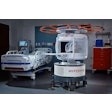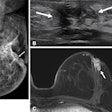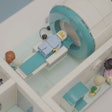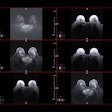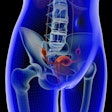As MRI magnets and gradients have grown more and more powerful, the sound pressure levels generated by the scans have followed suit. Not only is this an issue for patients who have complained of pain and hearing damage after having received a scan, but the noise also affects functions outside the MRI suite where a regular dance beat ("whump, whump, whump") of slamming gradients may not be welcome.
Although many MRI manufacturers acknowledge that it can get loud inside the bore and recommend hearing protection, just how loud has been subject to debate. Many vendors release only their average sound pressure level, taking into account the loudest sequences and the softest ones. But if you stick your head in the freezer and your feet in the oven you will be, on average, at a comfortable temperature. It's the extremes we're worried about and, unfortunately, the averages tell us very little that is useful.
Some contemporary scans can exceed 125 decibels (dB) in sound energy, above the 120 decibel threshold of pain. To put this in perspective, below is a table that shows the sound pressure levels (SPL) from many common sources:
| ||||
| Rocket launching | 180 | |||
| Jet engine | 140 | |||
| Thunderclap, air raid siren (1 meter) | 130 | |||
| Jet takeoff (61 meters), threshold of pain | 120 | |||
| Rock concert, discotheque | 110 | |||
| Firecrackers, subway train | 100 | |||
| Heavy truck (15 meters), city traffic | 90 | |||
| Alarm clock (1 meter), hair dryer | 80 | |||
| Noisy restaurant, business office | 70 | |||
| Air-conditioning unit, conversational speech | 60 | |||
| Light traffic (50 meters), average home | 50 | |||
| Living room, quiet office | 40 | |||
| Library, soft whisper (5 meters) | 30 | |||
| Broadcasting studio, rustling leaves | 20 | |||
| Hearing threshold | 0 | |||
Although vendors are concerned about the increasing sound levels in newer magnets, alternative, quieter methods of obtaining the scans haven't been developed. For the patient, this may mean wearing ear plugs or attenuating muffs, but what is to be done for the technologists in the control room, or the physicians in the dictation room upstairs, or the patients in the exam room below?
Anyone who has played telephone by connecting two tin cans with a taut string has proved that sound vibrations can travel through solid materials in addition to air. The noise of an MRI system, which can exceed the levels of a jet taking off, can penetrate the magnet room and become a major impediment to nearby activities. And both building and suite construction can have a huge impact on auditory comfort in nearby spaces.
The three principles in preventing the transmission of sound are that enclosures should be airtight (to keep airborne sound from leaking out), constructed of heavy materials (to make it harder for the sound energy to be transmitted), and have acoustically absorptive materials (to soak up the sound that would otherwise ricochet around the room).
Many types of conventional construction, particularly ones popular for the building of medical offices, can make both airtight and heavy construction very difficult. This puts greater pressure on acoustical absorption as the primary means of controlling noise from the MRI suite.
Every new MRI installation should consider acoustics early in the design stage, evaluating the specific operating levels of the MRI unit, building construction, and adjacent functions. MRI vendors' standard recommended details rarely address acoustic concerns, and combinations of sound isolation or absorption can have significant impacts on the design and construction of floors, walls, ceilings, and shielded enclosures. In short, effective acoustic treatments are not something that can be easily thrown in during the construction of the magnet room. As with other details, acoustic treatments must be carefully integrated with the architectural, structural, mechanical, and shield designs.
Retrofitting sound controls in existing suites can be time-consuming, expensive, and, in the end, not very satisfactory. Retroactively addressing acoustic problems can require shutting down a magnet, interrupting construction for adjacent functions, modifying ductwork and procuring expensive specialty acoustic materials. It is always advisable to put provisions in place to avoid acoustic problems than to try and correct them after they've happened.
As magnets continue to grow in power, they may also get louder. Even if acoustics aren't a problem today, after the next magnet gradient upgrade the MRI system may generate enough noise to infuriate the neighbors. It's not only a question of today's needs; it's also an issue of what you will need to allow you to remain competitive in the MRI arms race.
By Tobias Gilk
AuntMinnie.com contributing writer
May 5, 2006
Reprinted from www.mri-planning.com by permission of the authors. If you would like more information on any aspect of MR facility design or safety, please contact Robert Junk or Tobias Gilk at Jünk Architects.
Related Reading
Pediatric MRI and suite templates: If the shoe doesn't fit, don't wear it, April 25, 2006
When MRI throughput means more than revenue, April 11, 2006
ECRI's report on MRI safety, March 28, 2006
Doubling down: Raising the stakes of MRI patient safety, March 9, 2006
Ten questions patients should ask their MRI provider: Is this real or is it hype? February 15, 2006
MRI-guided cancer treatment, February 1, 2006
Copyright © 2006 Jünk Architects, PC

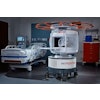
.fFmgij6Hin.png?auto=compress%2Cformat&fit=crop&h=100&q=70&w=100)



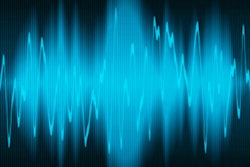

.fFmgij6Hin.png?auto=compress%2Cformat&fit=crop&h=167&q=70&w=250)
